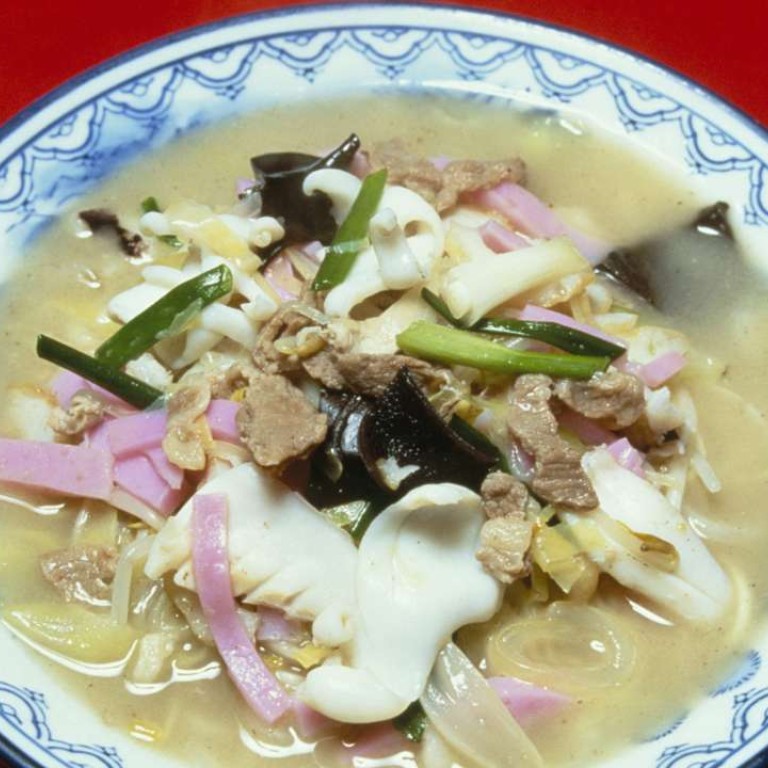
Why some of Nagasaki’s iconic dishes have Chinese fingerprints
The Chinese influence in dishes such as champon and kakuni goes back to a time when Japan was just beginning to open up to the rest of the world
If you’ve travelled through Japan, you’ll have noticed how many towns and cities have edible souvenirs unique to the area, sold in beautifully wrapped boxes. In Nagasaki, the port city in the northwest of Kyushu island, it’s a noodle dish called champon.
Urban legend has it that champon was invented by Chin Heijun, the founder of Shikairo, a Chinese restaurant that opened in Nagasaki in 1899 and is still in operation. Consisting of pork, squid, shrimp and inexpensive vegetables such as cabbage and carrots, stir-fried in lard, then cooked with noodles in a broth, it was said to have been created as a dish that Chinese students in Nagasaki could afford.
Chin had come to Japan from Fujian province, and he probably based his creation on a Fujianese dish of pork strips and noodles in soup. Some say the dish is derived from Fujian-style simmered noodles, or menmian, which has traditionally combined small, leftover pieces of pork, seafood and vegetables. The name champon is said to be derived from “chia png”, meaning “let’s eat” or “to eat a meal” in the Fujianese dialect (also known as Hokkien).

Champon’s soup base is a distinctive milky white, made from slowly simmered pork and chicken bones. According to Dr George Solt, assistant professor of history at New York University and author of The Untold History of Ramen: How Political Crisis in Japan Spawned a Global Food Craze, champon-style broth was the precursor to tonkotsu (pork bone) broth ramen, the Kyushu style that has become hugely popular across the globe. In his book, Solt attributes the beginnings of tonkotsu ramen to Miyamoto Tokio, in Fukuoka, who in turn attributes his style to champon cooks in Nagasaki.

Throughout most of the Edo period (1603-1868), Japan was closed off to much of the world. Contact was maintained only through a few trading ports, Nagasaki being one of them. China was an important trading partner, so when Japan eventually reopened its doors to the world, it became a popular destination for Chinese students.
Chinese influences from the trading era paved the way for other foods now unique to Nagasaki, particularly shippoku, banquet dishes designed to be shared, as opposed to the individual servings common in other forms of formal Japanese dining, such as kaiseki. With influences from the Dutch, Portuguese as well as the Chinese, one of the most well-known shippoku dishes is kakuni – pork belly slow cooked in soy sauce, sugar and spices – which is derived from dongpo pork, a famous Zhejiang dish. These days, kakuni is no longer the sole domain of formal banquets and is a popular izakaya dish throughout Japan.

